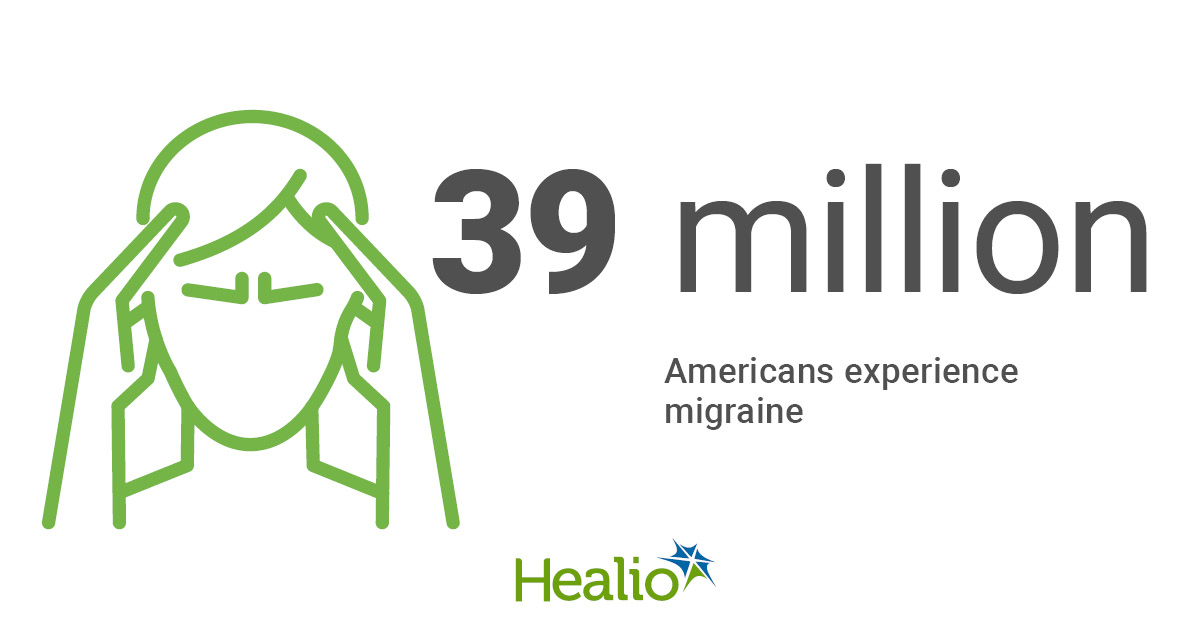DHE re-emerges as ‘magic’ migraine treatment


Acute migraine treatments containing dihydroergotamine, or DHE, could soon return to the mainstream, providing a less cumbersome treatment option for some of the 39 million Americans with migraine, several neurologists told Healio Primary Care.
DHE, an ergot alkaloid that binds and stimulates the 5-HT1B/D receptor subtypes and multiple other receptors, first became available to patients as an acute migraine treatment in 1945, according to Stewart J. Tepper, MD, professor of neurology at the Dartmouth Geisel School of Medicine, and Jessica Ailani, MD, director of the MedStar Georgetown Headache Center in Washington, D.C.
DHE, currently only available as the FDA-approved drug Migranal (Bausch Health Companies Inc.), or as an injection, is cumbersome to administer, Tepper and Ailani said.
“The nasal form of Migranal comes in a glass ampoule that can cost up to $640, has a metal collar that the patient has to remove, then a rubber stopper has to be popped out, and a nasal spout installed,” Tepper said. “The apparatus has to be primed, and once Migranal is sprayed into the nostril, the patient has to hold their nostril down and not sniff the DHE, because any DHE swallowed or sniffed will not be absorbed. This process is then promptly repeated in the other nostril, and 15 minutes later, both nostrils need to be re-sprayed, so that four sprays equals one dose. That’s very complicated for somebody in the throes of a migraine.”

Ailani explained how administering DHE via self-injection is just as difficult, necessitating a new formulation.
“The patient has to crack open a glass vial, pull up the medicine into a syringe, then inject it into their arm or leg,” she said. “That is very hard to do when suffering from migraine, but because DHE works like magic, there are patients willing to do it.”
DHE “fell out of favor” when oral treatments for migraine such as triptans became available, Tepper added.
Two DHE-containing products —INP104 and STS101 — are in various stages of the clinical trial process and could, if approved by the FDA, eliminate some of the currently cumbersome nature of administering DHE and thus, bring DHE back into the mainstream.
Ailani and Tepper both explained the benefits of these treatments.
INP104
INP104, being developed by Impel NeuroPharma, and is a liquid DHE formulation administered by the company's proprietary precision olfactory delivery device. The DHE formulation is the same as Migranal, but utilizes a hydrofluoroalkane propellant to deliver DHE nasally to the upper nasal cavity, according to its manufacturer. Impel NeuroPharma researcher Stephen B. Shrewsbury, MB ChB, FFPM, MAHS, and colleagues also wrote in Headache that during a phase 1 trial, INP104 was less likely to drip out of the nose or into the nasopharynx than the current nasal version of DHE, Migranal.
A phase 3 trial of INP104 that will examine its safety, tolerability and users’ health care utilization and quality of life after receipt of the drug recently enrolled its last patient. The company expects to file a New Drug Application with the FDA in the second half of 2020.
STS101
STS101 (Satsuma Therapeutics) is a powder formulation of DHE of microcrystalline cellulose and tribasic calcium phosphate, according to Stephen D. Silberstein, MD, of Jefferson Headache Center at Thomas Jefferson University in Philadelphia, and colleagues. The final product may also contain anhydrous caffeine, since Satsuma Therapeutics’ patent covers treatment options with and without this substance, researchers added.
The drug would come with a small plastic bottle and a one-way valve for nasal administration. According to clinicaltrials.gov, a phase 3 trial involving STS101 is expected to be complete by August 2020.
According to Tepper, MAP0004, an inhalable DHE that was under development until recently, was discontinued due to several problems, including chemistry and manufacturing. “No further development of inhalable DHE is currently underway,” he said.
Tepper and Ailani added that when compared to triptans, DHE has a low migraine recurrence rate, making it an optimal treatment in long duration migraines such as menstrual migraine and delivers pain relief even deep into a migraine attack after central sensitization and allodynia are already established.
DHE was previously thought to work by constricting blood vessels, leading to it being contraindicated in patients with cardiac disease, cerebral vascular disease, and peripheral vascular disease, according to Tepper. Although DHE is vasoconstrictive as are triptans, the mechanism of action for DHE involves activation of serotonin and multiple other receptors.
Tepper was hopeful that at least one of the two new formulations of DHE would be approved by the FDA in the next few years.
“These are the first new formulations of DHE available since Migranal was approved in 1997,” he said. “They should be faster and more convenient than Migranal. And assuming they have patient access that is reasonable, there will be an immediate uptake of these devices by headache specialists who will then probably tell their neurology colleagues: ‘we finally have a DHE formulation that we can recommend to people.’” – by Janel Miller
References:
Aurora SK, et al. Headache; 2011;doi:10.1111/j.1526-4610.2011.01869.x.
Baron EP, Tepper SJ. Future Neurology. 2011;6(3):327-333.
ClinicalTrials.gov. A randomized, double-blind, placebo-controlled study to evaluate STS101 in the Acute Treatment of Migraine (EMERGE). https://clinicaltrials.gov/ct2/show/NCT03901482. Accessed Nov. 28, 2019.
Drug, Chemical & Associated Technologies Association (DCAT). Allergan receives FDA complete response letter for migraine drug Semprana. https://www.dcatvci.org/pharma-news/1837-allergan-receives-fda-complete-response-letter-for-migraine-drug-semprana. Accessed Nov. 28, 2019.
Mayo Clinic. Dihydroergotamine (Nasal Route). https://www.mayoclinic.org/drugs-supplements/dihydroergotamine-nasal-route/description/drg-20063447. Accessed Nov. 15, 2019.
Migraine Research Foundation. Migraine facts. https://migraineresearchfoundation.org/about-migraine/migraine-facts/. Accessed Nov. 28, 2019.
National Headache Foundation. The FDA Rejects the Application for Levadex. https://headaches.org/2013/05/15/the-fda-rejects-the-application-for-levadex/. Accessed Nov. 15, 2019.
Shrewsbury SB, et al. Headache.2019;doi:10.1111/head.13476.
Silberstein SD, et al. Headache. 2019;doi:10.1111/head.13700.
Tfelt-Hansen PC, Koehler PJ. Headache. 2011;doi:10.1111/j.1526-4610.2011.01892.x.
Disclosures: Ailani and Tepper report numerous ties to the industry.

